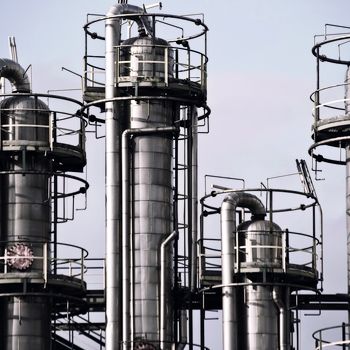
Anticorrosion coatings on the interior of storage tanks are critical when storing many types of products, whether saltwater or freshwater, gasoline, ballast, foamy liquids, or diesel. Typically, regulations are in place to ensure that the right coating is used. Quality inspection of the coating is an essential part of compliance with the regulations.
Although there are many such regulations, the Petrobras standard, N-1201:2008 – “Anticorrosion Coatings for the Interior of Storage Tanks”, is a good example. A multinational company headquartered in Brazil, Petrobras uses the above-mentioned standard wherever it has operations. This standard is in the public domain and can be accessed online from their database; it regulates all painting processes applied to storage tanks, from surface preparation, to painting and coating, through to final inspection.
| Item | Tank type | Stored product | Region to be painted | Paint type |
|---|---|---|---|---|
| 1 | Fixed roof tank | Saltwater Freshwater - potable or not Gasoline Ballast Foamy liquids Diesel Aviation fuel | Inside surface | Coating Type 1 |
| 6 | Fixed or floating roof, horizontal or underground | Ethyl alcohol | Inside surface | Coating Type 2 |
| 7 | Fixed or floating roof, horizontal or underground | Crude Oil Formation Water | Inside surface | Coating Type 3 |
The Petrobras standard N-1201:2008 prescribes the following coating types and coating thicknesses for the different products to be stored, as listed in Table 1:
4.2.1 Coating Type 1
4.2.1.1 Primer: one layer of epoxy-zinc phosphate paint: 100 µm
4.2.1.2 Top protective coating: two layers of non-solvent epoxy paint: 150 µm minimum thickness per layer.
4.2.2 Coating Type 2: one layer of zinc-ethyl-silicate paint: 75 µm
4.2.3 Coating Type 3: one layer of non-solvent epoxy resin, cured with polyamine and embedded with ceramic or fiberglass: 800 µm
Once they are applied, the coatings need to be inspected – a tricky job, because this is done in place! The enormous tank still smells sharply of noxious paint fumes as a technician wearing bulky protective gear and a headlamp (perhaps the only source of light) is lowered into the slippery vessel to measure the coating thickness at a number of positions. And, since a normal handheld gauge with integrated probe will not work, as the tank geometry does not permit it in some spots, an external probe is necessary.
FISCHER developed the MP0x-FP products for just such applications performed under difficult conditions. While other thickness gauges on the market require the use of both hands (one to hold the instrument and the other for the probe), the wristband accessory is indispensable when the task itself requires some juggling.
Another very practical advantage of the MP0x-FP series is that calibration can be done outside the tank using FISCHER calibration accessories to maximise accuracy. This procedure only needs a piece of the original tank material, thus to avoid that the entire calibration procedure has to be performed directly in the tank.
Besides the unmatched accuracy and repeatability performance of the MP0x-FP series from FISCHER, extra features like the wristband or the easy calibration process make these coating thickness gauges the ideal choice for checking compliance with regulations like the Petrobras standard N-1201:2008 for storage tanks. For more information about the MP0x-FP series, please contact your local FISCHER representative.